Regular property inspections are a vital aspect of effective property management. They help landlords maintain property standards, ensure tenant satisfaction, and catch potential issues early. In New Zealand, property inspections must follow guidelines under the Residential Tenancies Act to respect tenant privacy and legal requirements. Here’s a guide to best practices for conducting property inspections and reporting.
Why Routine Inspections Matter
Routine inspections are about more than just checking the property’s condition. They provide an opportunity to ensure that tenants are complying with lease terms, assess for any maintenance needs, and build a positive relationship with tenants by addressing their concerns.
Benefits of Routine Inspections:
- Property Maintenance: Early identification of issues reduces the likelihood of costly repairs.
- Tenant Satisfaction: Regular inspections show tenants that the landlord cares about the property’s condition.
- Legal Compliance: Inspections ensure the property meets New Zealand’s Healthy Homes Standards, maintaining a safe and comfortable living environment.
Best Practices for Property Inspections in New Zealand
To ensure smooth, compliant, and productive inspections, follow these best practices:
1. Schedule Regular Inspections
In New Zealand, landlords can conduct property inspections no more than once every four weeks (monthly). However, a more common frequency is every three months. Regular inspections maintain property standards without intruding on the tenant’s privacy.
Tip: Schedule inspections every three to four months to balance oversight with tenant comfort.
2. Provide Proper Notice to Tenants
New Zealand law requires landlords to give tenants at least 48 hours’ notice before an inspection. Notices should clearly state the date, time, and purpose of the visit. It’s best to provide written notice by email or text, so there’s a record of communication.
Example Notice:
“We will be conducting a routine inspection of your property on [date] at [time]. Please let us know if this timing is inconvenient, and we will do our best to accommodate.”
Tip for Landlords:
Respect tenant privacy by sticking to the agreed-upon inspection time and limiting inspection frequency.
3. Create a Comprehensive Inspection Checklist
Having a checklist ensures all areas of the property are inspected thoroughly. Key areas to include are the kitchen, bathroom, living areas, and any outdoor spaces. Specific items to check include smoke alarms, plumbing fixtures, and any signs of wear or damage.
Example Checklist Items:
- Test smoke alarms and check for fire safety compliance.
- Inspect walls, floors, and ceilings for signs of damage or mold.
- Check for leaks, water pressure issues, and plumbing in kitchens and bathrooms.
Tip: Customizing the checklist to your property type helps ensure all areas of concern are covered.
4. Document the Property Condition with Photos and Notes
Taking photos and notes during each inspection provides a record of the property’s condition over time. This documentation helps if there are any disputes with tenants over damage or maintenance at the end of the lease.
Example:
If a wall shows signs of wear, take a photo and note it in the inspection report. Documenting its condition now can help establish whether further damage occurs in the future.
Tip for Tenants and Landlords:
Share relevant parts of the inspection report with tenants, especially if there are any items that need attention.
5. Check for Healthy Homes Compliance
In New Zealand, properties must comply with Healthy Homes Standards for heating, insulation, ventilation, moisture control, and draught-stopping. During inspections, ensure these areas are up to standard, and document any issues that may need to be addressed.
Healthy Homes Checklist Items:
- Is the main living area equipped with a fixed heater?
- Are insulation levels adequate in ceilings and underfloors?
- Is ventilation sufficient in all required areas?
Tip: Addressing Healthy Homes compliance helps avoid penalties and ensures tenants have a comfortable, healthy environment.
6. Engage Tenants and Address Their Concerns
Inspections also provide an opportunity to communicate with tenants, allowing them to report any issues or request repairs. Tenants often feel more satisfied when they know their landlord is proactive about property maintenance and responsive to their concerns.
Example Conversation Points:
- “Is there anything in the property that needs attention?”
- “How has the heating been working for you this season?”
Tip for Building Good Tenant Relations:
Showing interest in tenant concerns during inspections promotes a positive relationship and can lead to longer tenancies.
7. Follow Up on Maintenance and Repairs Promptly
After each inspection, review the report and prioritize any required maintenance or repairs. Following up quickly shows tenants that their comfort and safety are priorities, and it also helps prevent minor issues from becoming major problems.
Example Follow-Up Process:
- Review the inspection report within a day.
- Contact relevant contractors if necessary.
- Inform tenants of any scheduled repairs and expected timelines.
Tip: Scheduling minor repairs soon after the inspection helps build trust and prevents more expensive repairs in the future.
How NG Property Management Conducts and Reports Inspections
At NG Property Management, we prioritize transparency and thoroughness in our property inspections. Here’s how we approach inspections to protect property value and tenant satisfaction:
- Detailed Inspection Checklists: Our team follows a comprehensive checklist that includes both interior and exterior areas, ensuring all aspects of the property are covered.
- Timely Notices and Respectful Conduct: We provide tenants with at least 48 hours’ notice and work around their schedules whenever possible.
- Documented Reports with Photos: Each inspection includes photos and notes, providing a clear record of the property’s condition and any changes over time.
- Responsive Maintenance and Follow-Up: After each inspection, we promptly address maintenance issues, coordinating repairs and updating tenants on progress.
Key Takeaways
- Routine property inspections help landlords maintain property standards, identify maintenance needs, and improve tenant satisfaction.
- Best practices include using checklists, providing proper notice, and documenting conditions with photos and notes for clear records.
- NG Property Management conducts thorough inspections and provides timely maintenance follow-ups, ensuring your property stays in excellent condition.
Regular inspections are essential for a smooth and successful rental experience. By partnering with NG Property Management, you can trust that your property is maintained to the highest standard and that your tenants’ needs are met. Contact us today to learn more about our inspection and property management services.
Disclaimer: This blog provides general information and should not be considered legal advice. Please consult a professional for specific guidance on property inspections in New Zealand.



